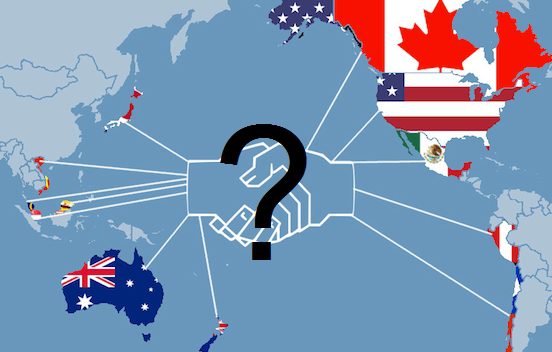The first 100 days of Donald Trump’s presidency have come and gone. But with trade agreements, health care and tax reform all hanging in the balance, retailers are still feeling levels of uncertainty comparable to those they had as the 2016 election played out.
As of today, much of the administration’s potential effects on retail still remain hypothetical. For example, the Trump administration laid out a plan to replace the present 35% federal corporate tax rate with a 15% rate. But the president also has been vocal about imposing tariffs on foreign goods since his election, and has championed his “border tax,” which would levy a 35% duty on brands that outsource operations outside the U.S.
None of these potential tax alterations have actually progressed to any form of legislation, but the NRF has thrown its support behind the possibility of corporate tax reform. In a statement, NRF President and CEO Matthew Shay welcomed the proposal, noting that “retailers pay the highest effective tax rate of any industry.”
Advertisement
“The devil is in the details, but we are optimistic that when tax reform crosses the finish line it won’t include a border adjustment tax or any other scheme that shifts the financial burden to consumers,” Shay said. “Taxing imports would not only raise prices for consumers, it would ultimately cost American jobs and shutter American businesses. We look forward to continued conversations with the administration and Congress to make pro-growth tax reform a reality.”
Conflict Over Free Trade Agreements
The first 100 days did include some economic policy changes involving global trade. For one, the U.S. exited the 12-nation Trans-Pacific Partnership (TPP) trade agreement. NRF officially supported the TPP, arguing that it would eliminate tariffs on common consumer products from Japan, Malaysia, New Zealand, Vietnam and Brunei — all countries with which the U.S. currently does not have free trade agreements. The impact on consumers: higher prices on many products made in East Asia and a smaller product mix to choose from.
Additionally, the Trump administration imposed its first official tariffs on Canadian softwood lumber imports, taxing five specific companies with penalties ranging from 3% to 24%. All other Canadian lumber companies will have a nearly 20% tariff on exports to the U.S. While the move is designed to create a level playing field for American lumber companies, its immediate impact could be a slowdown in the current pace of lumber trade. Additionally, the move could be a sign of more high tariff impositions in the future.
In actuality, however, there has been relatively little concrete legislative and policy activity during Trump’s first 100 days. That means it’s too early to draw conclusions about how retail and related industries will be affected by the rest of his term, according to Shelley Kohan, VP of Retail Consulting at RetailNext.
“For the Trump administration, the 100 days has probably been more publicized in the press than previous presidencies, and I think there’s also a vast opinion out there — pro and con — of those 100 days,” Kohan said in an interview with Retail TouchPoints. “What I’m hoping for as we move forward is to see the PR-side settle down so everyone can just get back to business. I’d like to see some of the details and actual programs and policies so that we can better understand what the next year is going to look like.”
NAFTA Changes Unlikely To Have Major Impacts
The North American Free Trade Agreement (NAFTA), comprised of the U.S., Canada and Mexico, has been a frequent target of Trump, but the fact that the arrangement will be subject to renegotiation (as opposed to outright termination) means that most retailers will be largely unaffected. Duty rates and shipping patterns have yet to change for any of the three countries involved, and the growth of global trading partners continues to give retailers more options for product manufacturing.
“It’s not a make or break,” said Alan Behr, Chair of the fashion practice at law firm Phillips Nizer LLP in an interview with Retail TouchPoints. “It does potentially increase the cost of goods from Mexico, and Canada has never been a major issue regardless of tax. The American retail model now, which is ‘buy far and sell domestic,’ is not going to be affected by a one-country diminution. I don’t see it as a huge event in this area of business. We still have China — by a wide margin — then Vietnam, India, Bangladesh and Indonesia ahead of Mexico when it comes to foreign textile sales.”
Behr noted that while consumer expectations continue to change in terms of product access and delivery, shoppers’ general indifference toward product origins means any possible NAFTA modifications won’t be affecting retail sales either.
“The squabbles regarding NAFTA and the Trump administration are over sourcing,” Behr said. “The net effect in the retail market of physical sales or online sales has no perceivable impact in the alteration of source unless you’re buying one-off merchandise on eBay from someone in Shanghai. When we’re talking about a retailer that buys from a vendor and then sells to the ultimate consumer, the source is not going to change the equation causing the shift now. There’s another source out there somewhere; Mexico is not your source.”
Consumer Confidence Remains High In 2017
Up until a hiccup last month, consumer confidence has for the most part continued to increase over the past year. The Consumer Confidence Index (CCI), which measures U.S. consumers’ optimism on the state of the economy, dropped to 120.3 in April, according to The Confidence Board. But the index reached 125.6 in March, its highest level since December 2000. Prior to that, the index stood at 116.1 in February. The year-over-year jump is staggering; the index stood at 94.7 in April 2016.
So with consumer confidence still rising at a rapid rate, retailers should at least feel better about the fact that shoppers still want to spend, regardless of the presidential situation. In fact, Kohan pointed out that retailers’ biggest concerns will continue to be about the way consumers spend, not just how often they spend, as the former factor continues to drive retail success.
“The economic situation is always directly correlated and related to the retail environment, especially the fashion and luxury sides of the business, but I do think that a bigger impact on what’s happening today is coming from a shift in the shopper mindset,” Kohan said. “The bigger shift transforming the industry today is related to the shopper. That’s not to say the economic piece isn’t important; it is. The economic indicators need to be there, but beyond the scope of having strong economic performance within our country, the next level is this consumer shift.”









